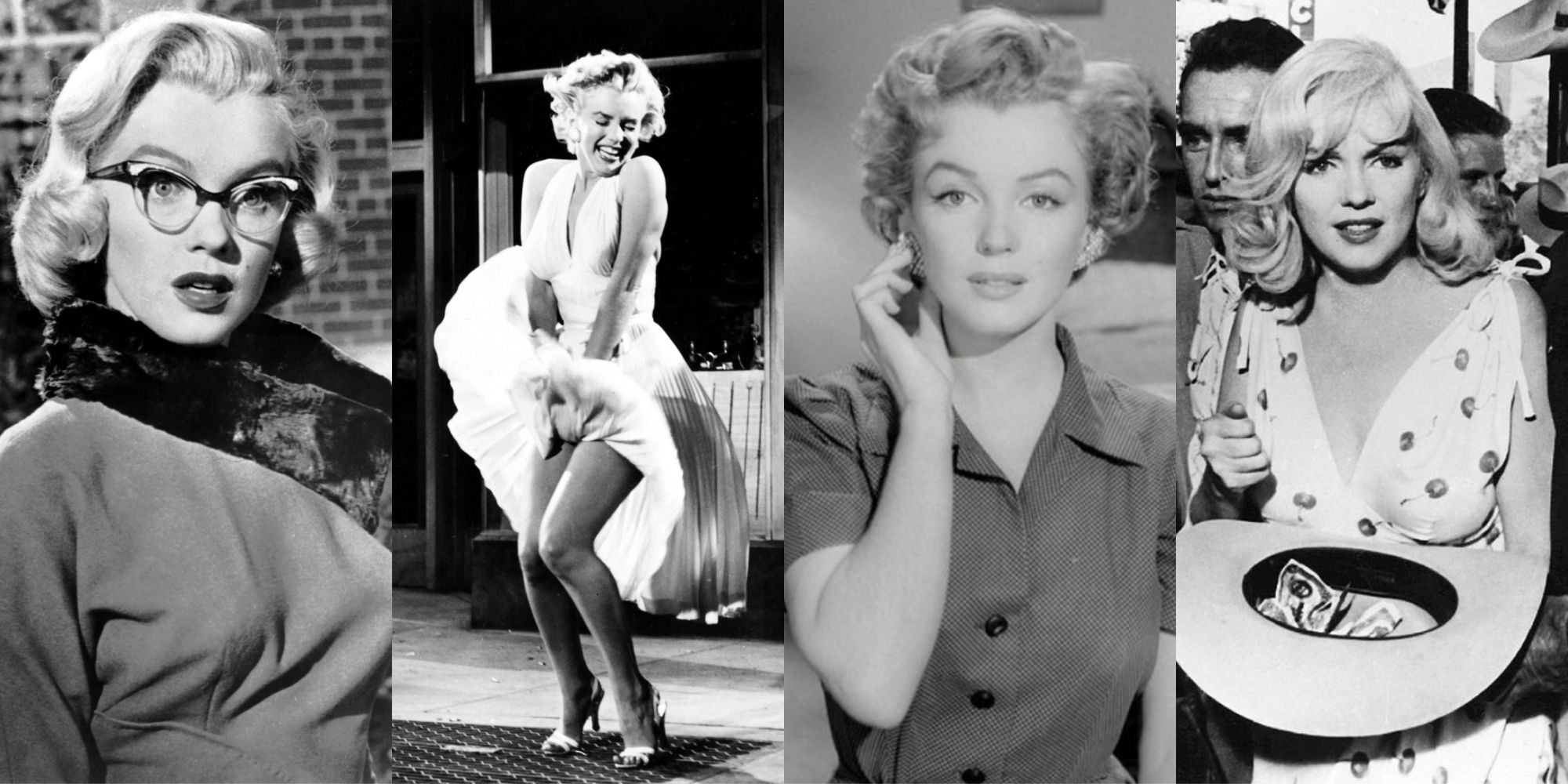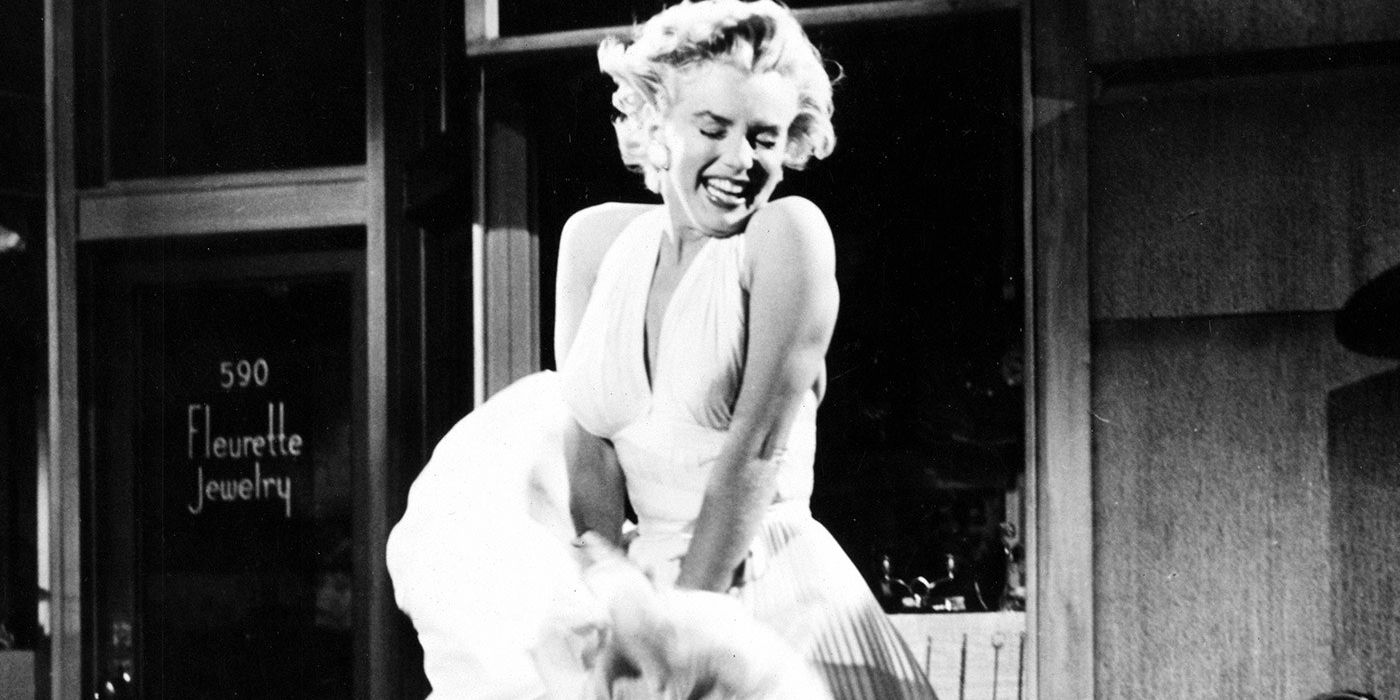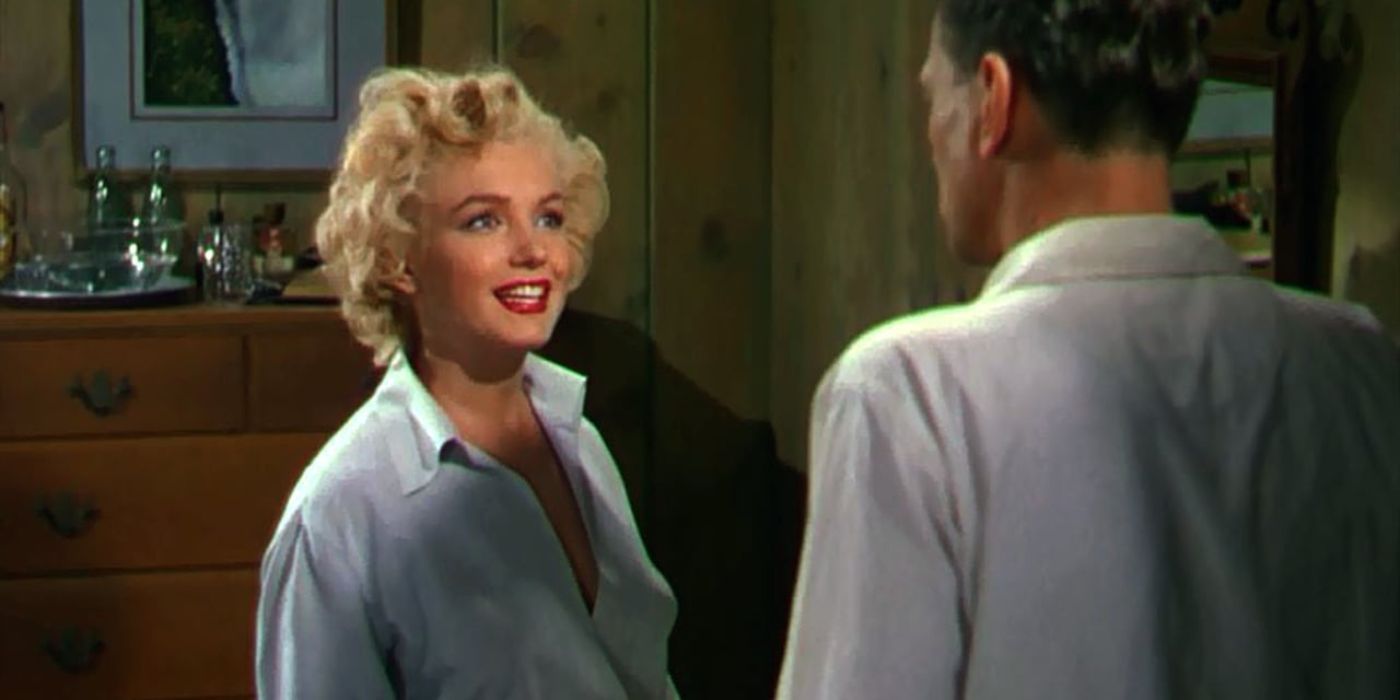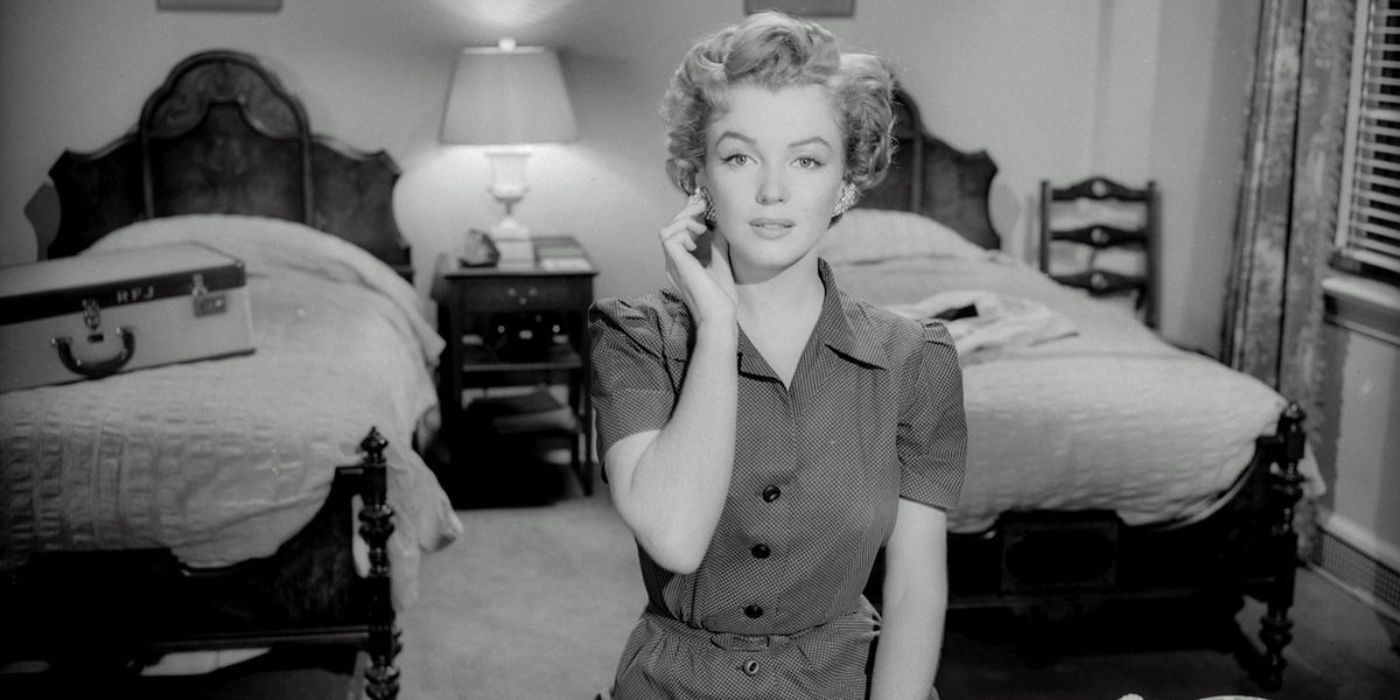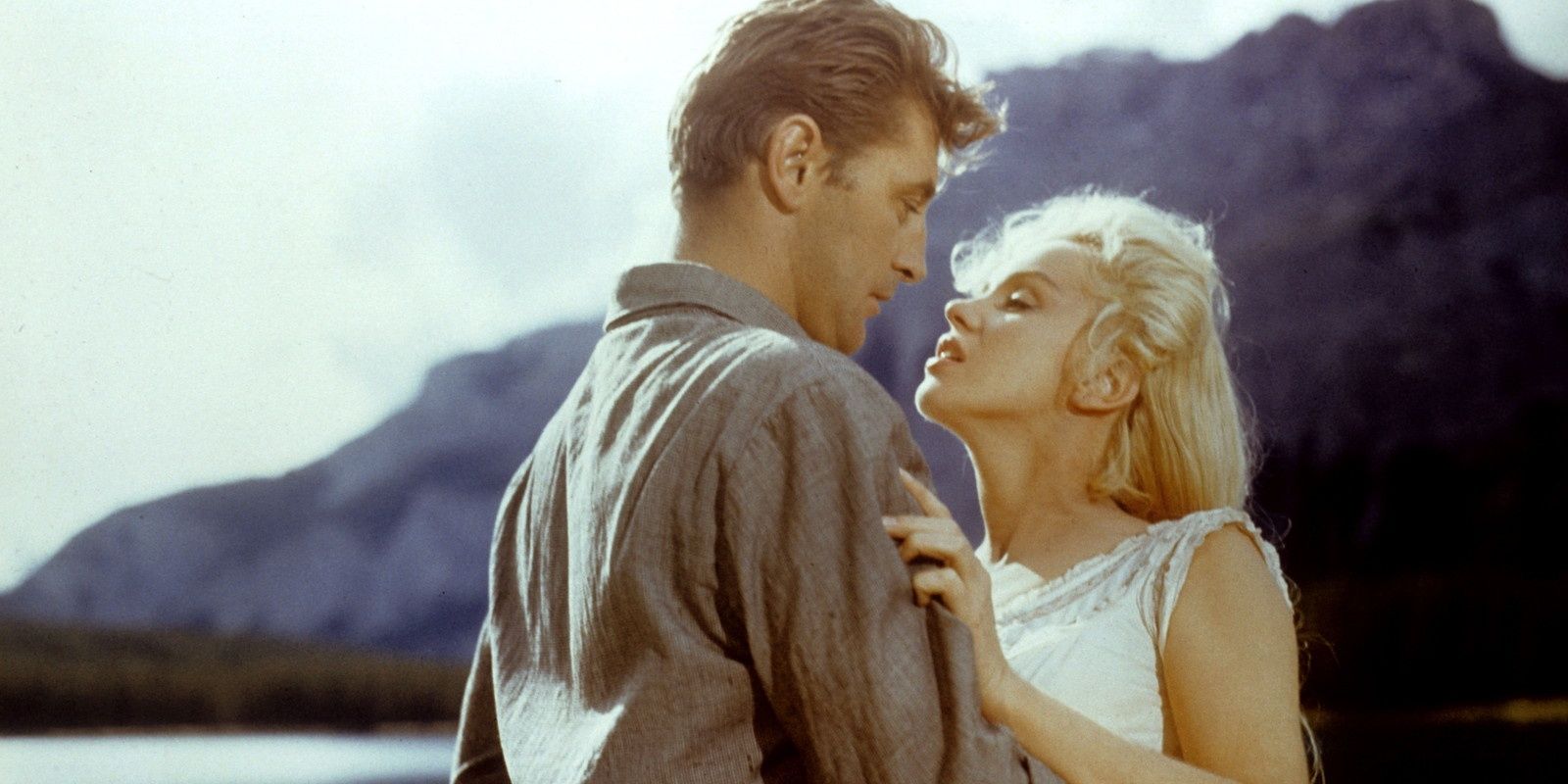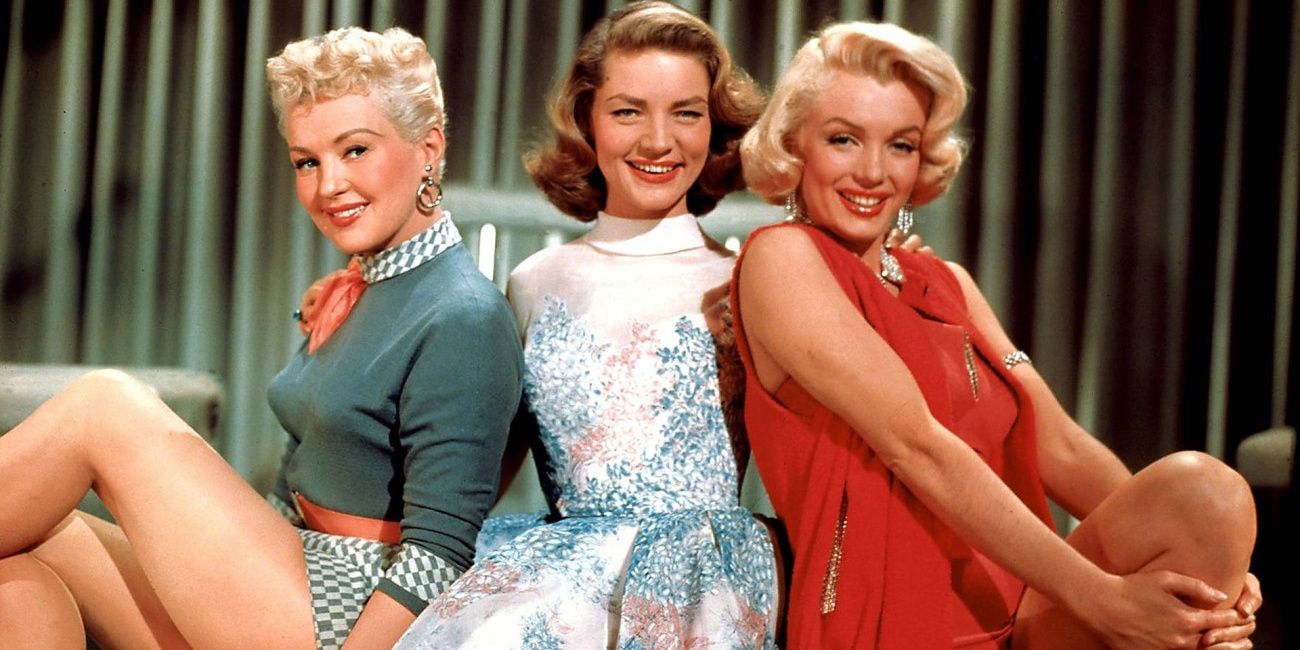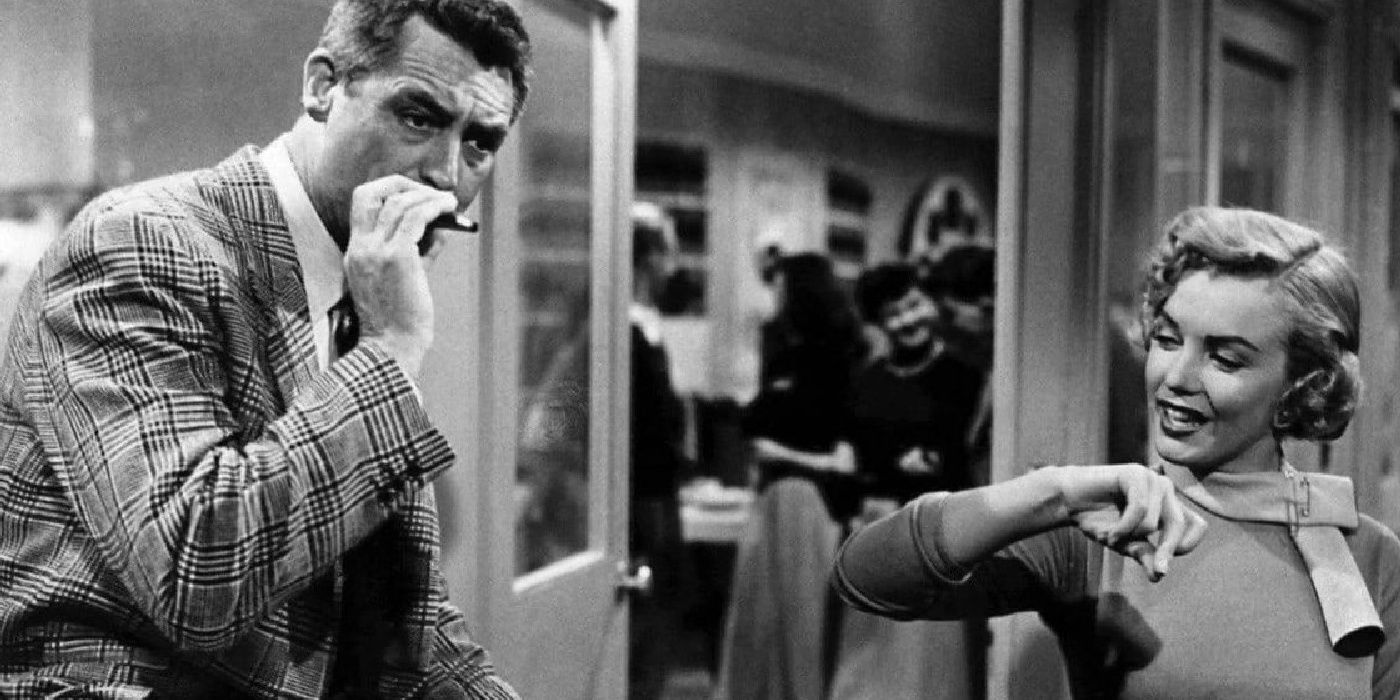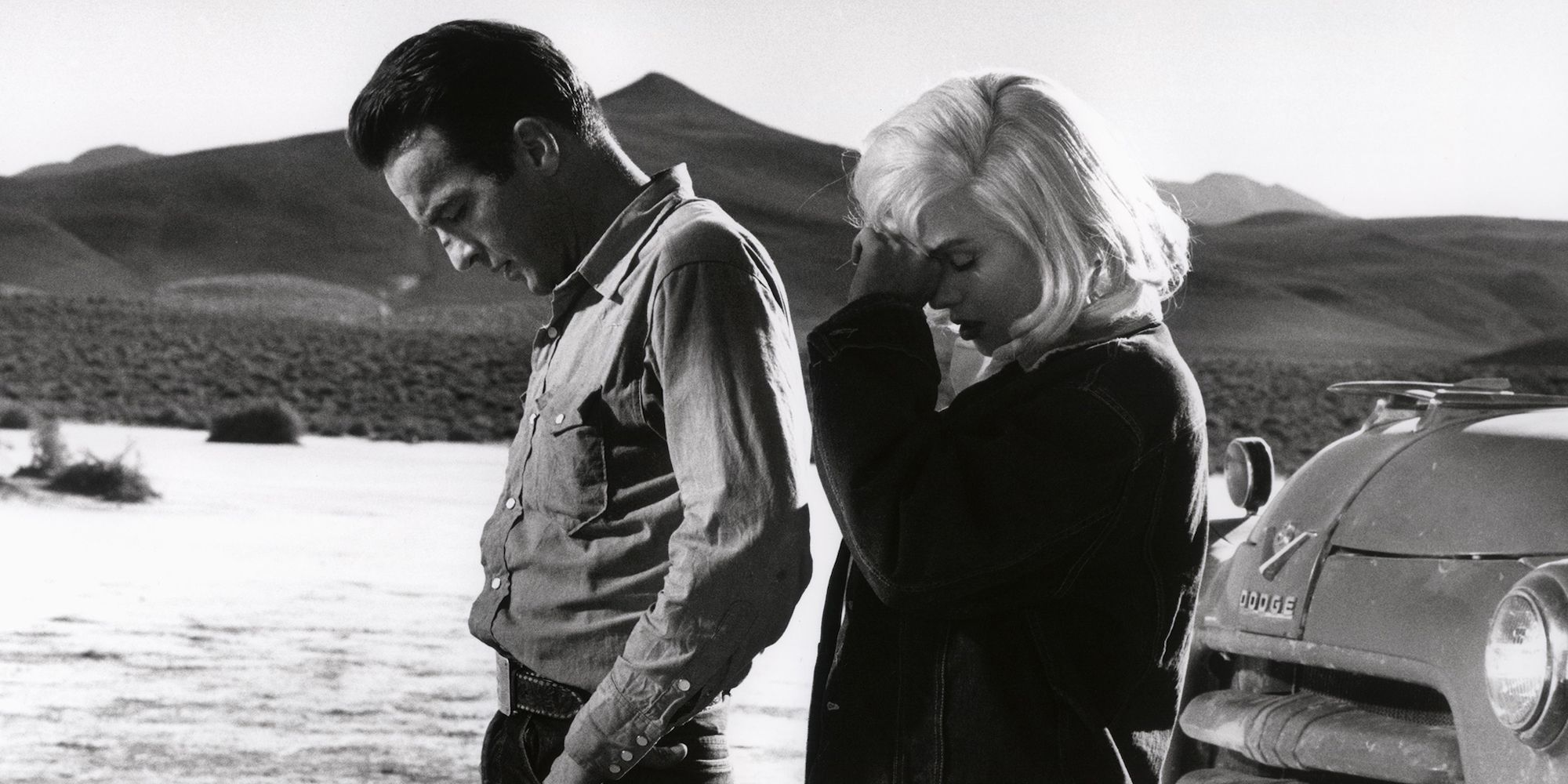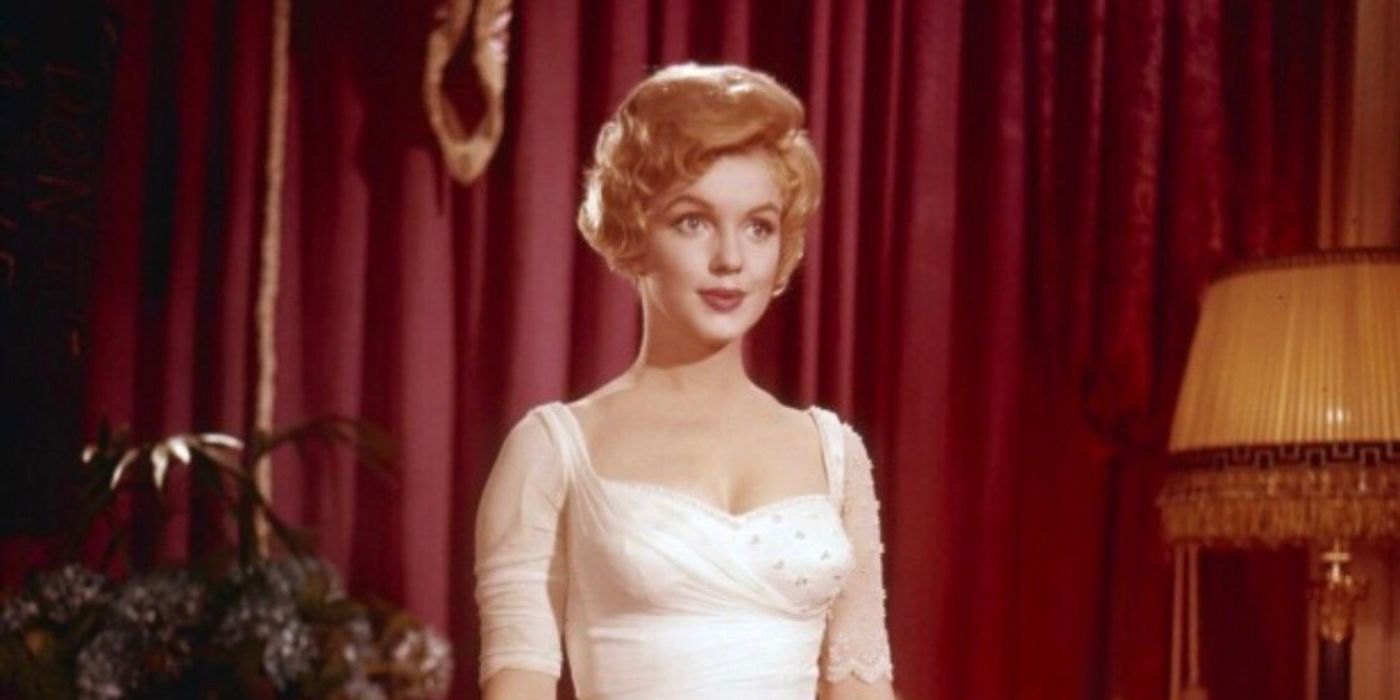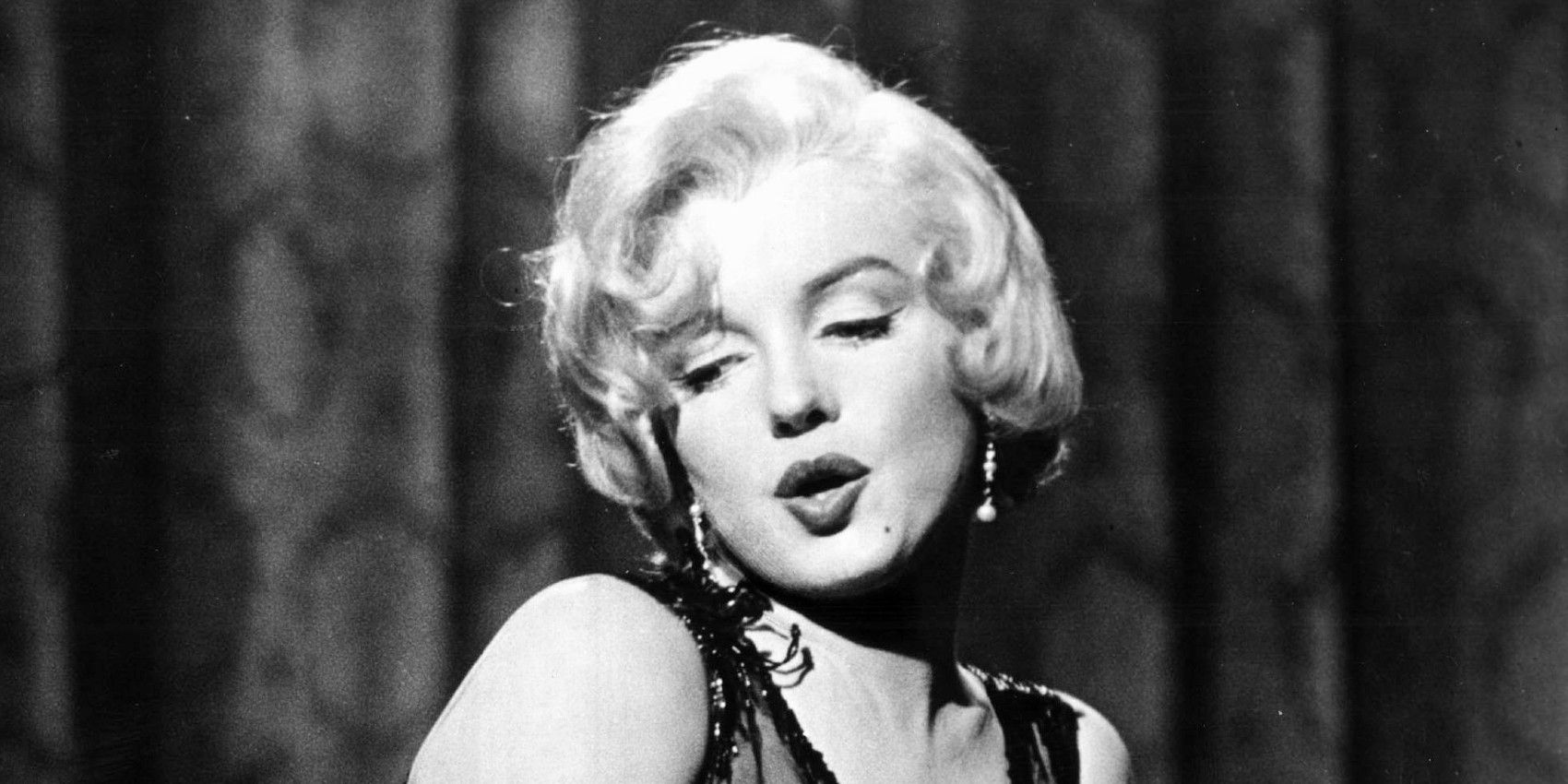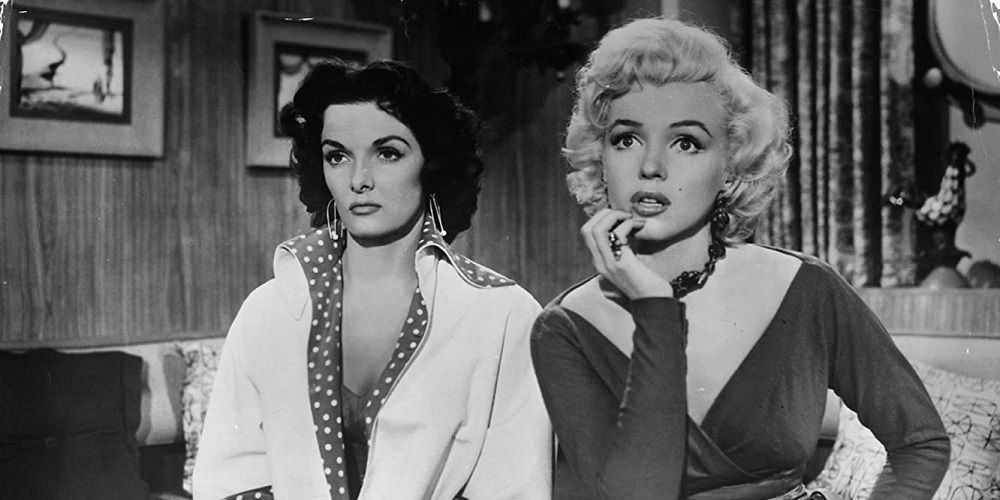Though Andrew Dominick's salacious biopic Blonde isn't expected to be released on Netflix until December 2022, the Ana de Armas film is already making headlines. Adapted from a novel by Joyce Carol Oates, the film promises to dive deep into the Marilyn Monroe legend and offer a new perspective on the tortured ingenue.
From her brief appearance as an up-and-comer in All About Eve to her tragic death in 1962, Marilyn Monroe became one of the most indelible screen icons of all time. But even as a screen icon, Monroe remains frustratingly underrated as an actress and comic star.
The Seven Year Itch (1955)
This Billy Wilder comedy is most remembered for Monroe standing above a subway grate as an unfortunate gust of wind creates one of the most suggestive images in Hollywood history. Unfortunately, things don't get much better from there.
Centered on a mild-mannered working man who is suddenly infatuated with the luminous blonde staying in the apartment upstairs, The Seven Year Itch does little more than ogle at Monroe's curves and revel in her playful naivité. Though she nails her assignment, the film itself is more of an artifact than an entertainment.
Niagara (1953)
Though still under contract as a stock player (leading her to be dramatically underpaid throughout her early career), Monroe was quickly thrust into the spotlight in several films throughout 1953. In this somewhat forgotten domestic thriller, rated one of Monroe's best films by IMDb, she is cast as an evil femme fatale married to sadsack everyman Joseph Cotton.
Despite largely being remembered for her comedic roles (including Gentlemen Prefer Blondes and How to Marry a Millionaire, both also released in 1953) Monroe proves surprisingly capable of menace and manipulation, leading to several seductive moments for the young starlet.
Don't Bother to Knock (1952)
A year before going full femme fatale in Niagara, Monroe was cast as a love-crazed babysitter in this fun little thriller from director Roy Ward Baker. Having already appeared in bit parts across a dozen movies, this was Monroe's first opportunity as a headliner and she doesn't disappoint.
The film also includes worthy performances from Richard Widmark and Anne Bancroft (in her film debut), but Monroe's livewire performance is by far the film's most interesting element. Her mania is truly arresting, yet she manages to bring a sad depth to the outlandish role she was handed.
River of No Return (1954)
Few remember Monroe's trip to the old west, but she is unsurprisingly vibrant playing against a rugged Robert Mitchum in Otto Preminger's romantic adventure loosely modeled after Vittorio de Sica's Bicycles Thieves. As a sultry saloon singer turned frontier farmer during the 19th century Gold Rush, Monroe was a vision in both her spangled costumes and rough workwear.
The production was beset with difficulties, including dangerous stunts and conflict between Preminger and Monroe when the actress attempted to alter her signature soft voice. Preminger would eventually quit the film mid-filming, leaving Monroe favorite and How to Marry a Millionaire director Jean Negulesco to finish the job.
How to Marry a Millionaire (1953)
Monroe is the standout player alongside fellow stars Lauren Bacall and Betty Grable in this charming rom-com about three fashionable Manhattan models on the hunt for rich husbands. The three actresses, all at different phases of their illustrious careers, play wonderfully off of each other, but Monroe still manages to steal every scene she's in with perfect delivery and poise.
How to Marry a Millionaire was one of Monroe's many collaborations with costume designer William Travilla, who crafted nearly all of her most famous outfits and earned an Academy Award nomination for his work in this film, including Monroe's eye-catching red swimsuit.
Monkey Business (1952)
Monroe excelled as a supporting bombshell, leading director Howard Hawks to her cast her in his next film Gentlemen Prefer Blondes. Playing a naturally youthful secretary to the artificially youthful scientist played by Cary Grant, Monroe manages to be undeniably charming.
Her innocent lilt fits beautifully in the unique musicality of Hawks' approach to dialogue, especially when playing opposite the frantic energy of Grant. While she may not have been the star of the show, Monroe proved herself to be more than just eye candy and audiences were eager to see more.
The Misfits (1961)
In Marilyn Monroe's controversial final film, she dug deeper than she ever had before. Written for the screen by her then-husband Arthur Miller, the film was meant to be a "valentine" to the starlet as she hoped to display new facets of her acting talents.
Working diligently with her longtime coach Lee Strasburg and acting alongside screen legends Montgomery Clift and Clark Gable (who also died shortly after the film's release), Monroe displayed a vulnerability she had yet to express on screen. Her sensitive divorcee searching for any sort of kindness and safety she can find, served as a sad coda for the actress' brief, brilliant career.
The Prince and the Showgirl (1957)
Though not as well remembered as some of Monroe's other films, this light comedy of culture clash is a wonderful showcase for Monroe's comedic talents. Playing against stage and screen legend Laurence Olivier, Monroe stars as an American showgirl in London who nearly destabilizes a nation by attracting the attention of a visiting Regent.
It was Monroe herself who drove the creation of this film, first acquiring the rights to Terence Rattigan's hit London play, The Sleeping Prince. She then drew in Olivier, and though there were reportedly some tensions on the set, Olivier would later declare that "No one had such a look of unconscious wisdom.”
Some Like It Hot (1959)
Monroe personally fought for the role of Sugar in Billy Wilder's ribald comedy and her successful lobbying led to the most celebrated role of her career. It also doesn't hurt that Some Like It Hot, co-starring Tony Curtis and Jack Lemmon, went on to become one of the most heralded comedies in Hollywood history.
While some elements of this classic comedy have aged poorly, and Monroe herself is largely boxed in as a romantic object, keeping it from being her best, the film is an undeniable tour de force for Wilder, who was already responsible for some of early Hollywood's greatest hits.
Gentlemen Prefer Blondes (1953)
This Howard Hawks musical comedy is the ideal showcase for everything that made Marilyn Monroe a movie star. Set largely on a luxurious ocean liner to Paris, Marilyn plays the money-minded showgirl Lorelei Lee, traveling with her best friend and partner-in-glam Dorothy (played by a dryly funny Jane Russell).
The film's most famous sequence is undoubtedly Monroe's legendary performance of "Diamonds are a Girl's Best Friend," a sequence that has become emblematic of Monroe's appeal. But her performance is stellar across the board, cementing her as not only the era's greatest beauty but also one of its greatest comediennes.

